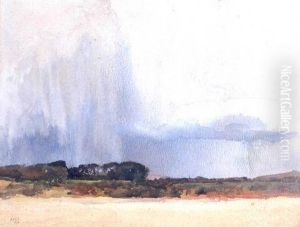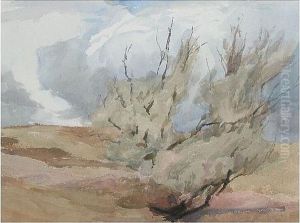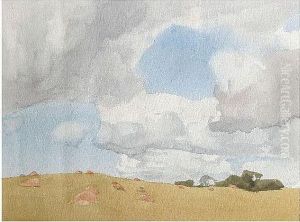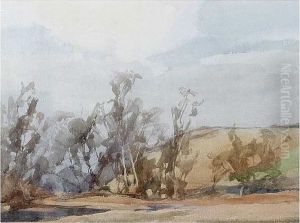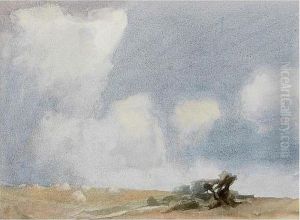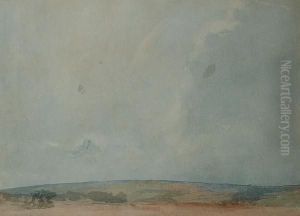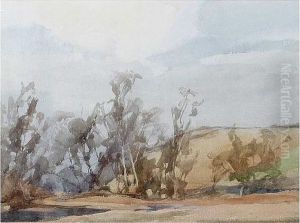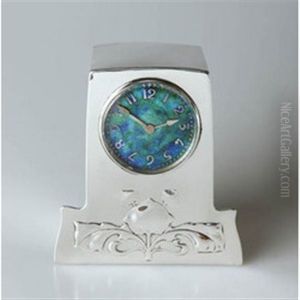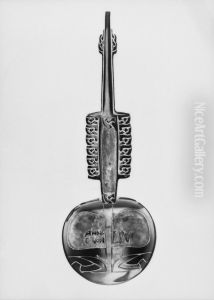Archibald Knox Paintings
Archibald Knox was a British artist, designer, and a key figure in the Arts and Crafts movement, which flourished at the end of the 19th and the beginning of the 20th centuries. Knox was born on April 9, 1864, in Cronkbourne Village, Isle of Man. His work is renowned for its innovative and distinctive fusion of Celtic motifs with Modernist forms, making him a pivotal figure in the transition from Victorian to modern design aesthetics.
Knox's education and early career were rooted in the Isle of Man, a place that had a profound influence on his artistic vision. He attended Douglas School of Art and later moved to London, where he furthered his studies. Despite his time in England, Knox's designs remained deeply influenced by the Celtic heritage and natural beauty of his homeland. This unique blend of influences is evident in his most celebrated work for Liberty & Co., a leading London department store and advocate of the Arts and Crafts movement. From 1899 to 1912, Knox designed a wide range of products for Liberty, including silverware, pewter, jewellery, and textiles. His work for their Cymric and Tudric lines is particularly noted for its innovative use of Celtic interlace and knotwork, combined with a modern, almost abstract, aesthetic.
Beyond his contributions to decorative arts, Knox was also involved in education, teaching at various institutions and influencing the next generation of designers. Despite his impact on design and the Arts and Crafts movement, Knox's work was not widely recognized during his lifetime. It was only in later years that his contributions were fully acknowledged, with a renewed interest in Celtic design and craftsmanship helping to elevate his status posthumously.
Archibald Knox's legacy is that of a visionary artist who bridged the gap between traditional Celtic art and modern design. His work continues to be celebrated for its originality, craftsmanship, and the seamless integration of form and decoration. Knox passed away on February 22, 1933, in Douglas, Isle of Man, but his designs remain influential and continue to be admired for their beauty and innovative approach to the fusion of historical and modern design elements.
